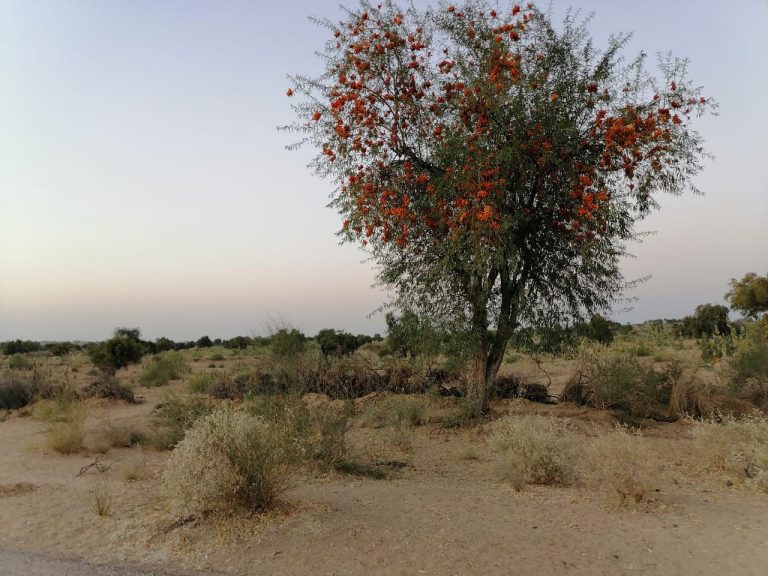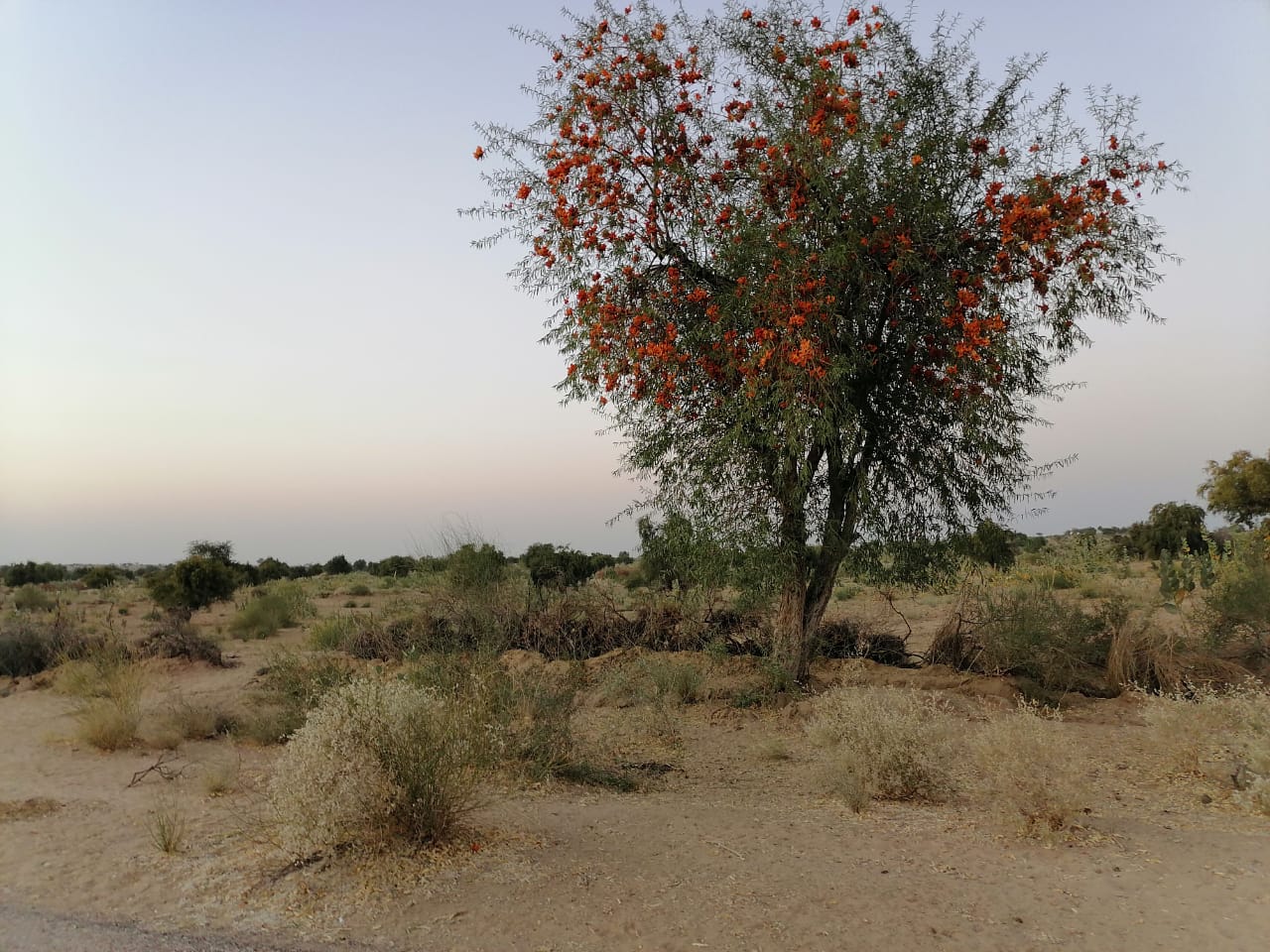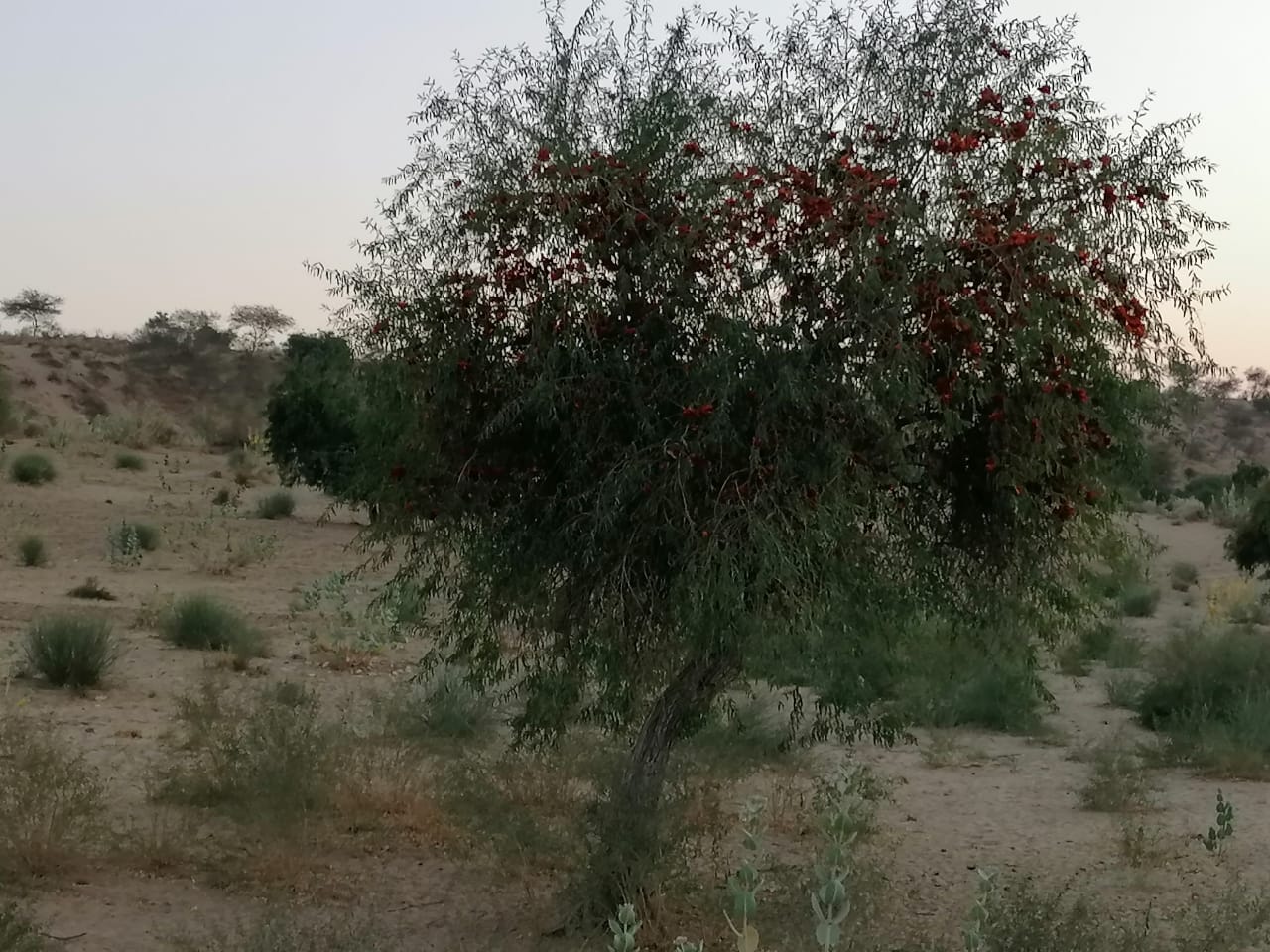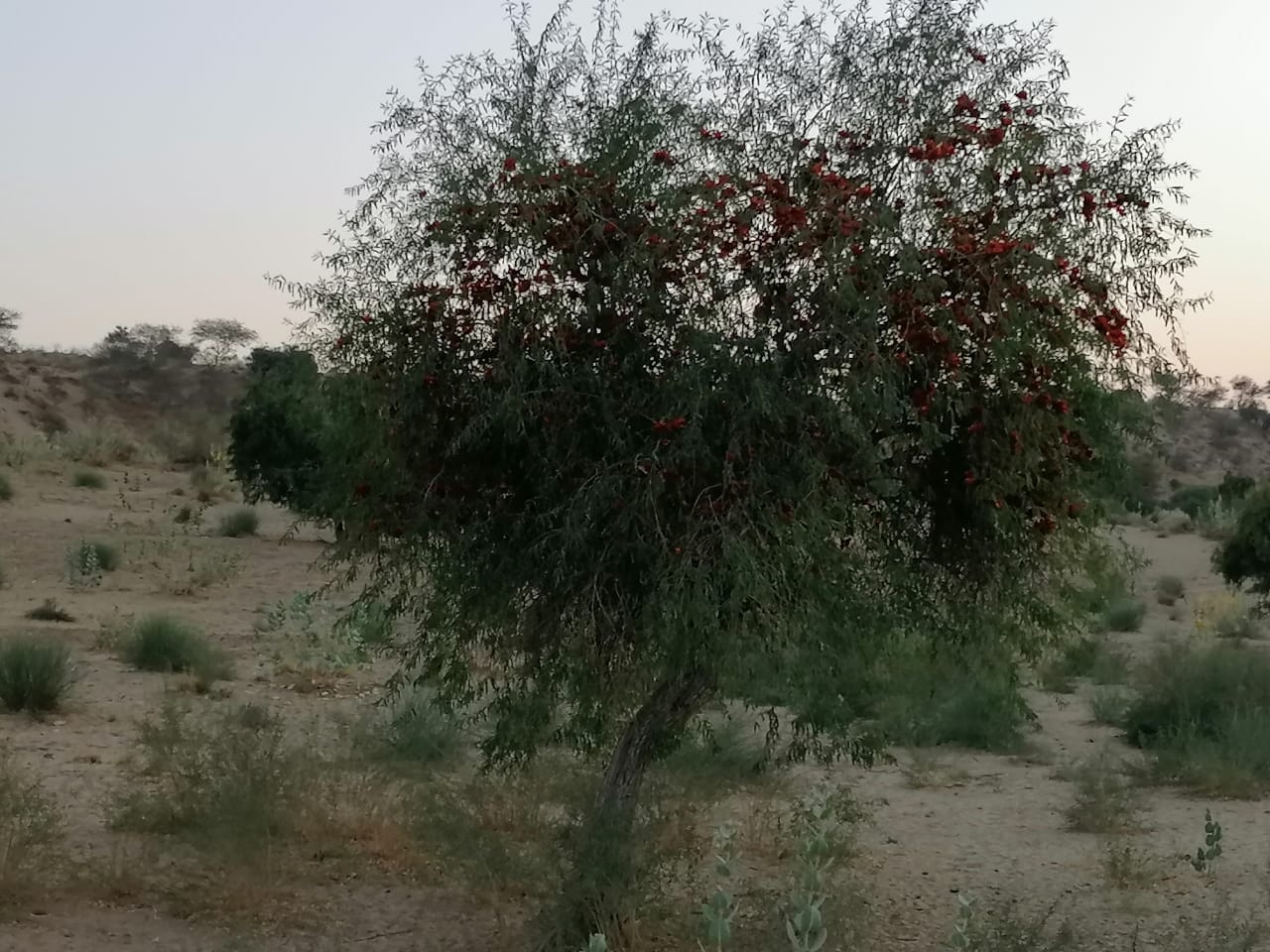
 The valleys and bowls of sand abound with the red and orange flowers of Rohiro tree during February and March. It can be called ‘desert teak’ because of its solid wood.
The valleys and bowls of sand abound with the red and orange flowers of Rohiro tree during February and March. It can be called ‘desert teak’ because of its solid wood.
By Noor Ahmed Janjhi
Peacocks do cry for rain as ‘come rain, come rain’ in the months of June and July. Clouds, filled with pure water start showering over Thar as the torrents of monsoon. The monsoon showers turn Thar into lush green leas and cultivated tracts. Grazing animals could be seen like flowers grown on the greenery. All of the greenery fads away by December as the harvesting come to its conclusion. And after it, grey sand dunes wear a look of dried grass or seem nude because of less vegetation. The general look of the dunes and valleys reflect a beautiful but gloomy portrait of nature. Meanwhile, a strong tree of Thar appears with colorful flowering to sooth the gloominess of the dunes and valleys during the months of February and March. The valleys and bowls of sand abound with the red and orange flowers of Rohiro tree. It can be called ‘desert teak’ because of its solid wood.
 Its botanical name is tecomella undulate or tecoma undulata. It is a tree of desert and extremely resistant to drought, frost and fire. It is an ornamental tree, mostly evergreen, medium sized tree (8 m high, 0.8 m dbh)) with an open and spreading crown and deep root system.(Trees for Dry lands – editor Drake Hooking). Its bark is grey and whitish and branches are stout, smaller ones often slightly drooping. Its flowers are large and showy. The colors of flowers pale yellow, red and deep orange. Fruit is large pods containing dark brown seeds with white membrane wings. The tree is famous for its solid wood and attractive flowers. However, the flowers have no fragrance. The flowers and pods provide the good nutrition for goats and camels.
Its botanical name is tecomella undulate or tecoma undulata. It is a tree of desert and extremely resistant to drought, frost and fire. It is an ornamental tree, mostly evergreen, medium sized tree (8 m high, 0.8 m dbh)) with an open and spreading crown and deep root system.(Trees for Dry lands – editor Drake Hooking). Its bark is grey and whitish and branches are stout, smaller ones often slightly drooping. Its flowers are large and showy. The colors of flowers pale yellow, red and deep orange. Fruit is large pods containing dark brown seeds with white membrane wings. The tree is famous for its solid wood and attractive flowers. However, the flowers have no fragrance. The flowers and pods provide the good nutrition for goats and camels.
_____________________
Watch a video about Peacocks of Thar Desert
_____________________
In past it was a practice to protect this tree from cutting. People call it ‘a faqir wann’ or a saintly tree. But the practice has been ended with the passage of time. Actually, the tree penetrates its roots deeply in earth and sucks much more water and fertility, so it does not allow growing any other tree and grass or cropping under its shade or surroundings. The growth and spread of the tree increased after its cutting and make the farmland and fields de-fertile. In this people has created an indigenous protection mechanism through the attributions of sainthood and warned the tree cutting people of curse. It has been a practice after the British rule, that there was needed an official permission letter to cut the tree for domestic purpose. Strictly it was prohibited for commercial use, but the market has overthrown everything. Nowadays, these practices have been ignored. The tree provides finest timber available locally. Its yellowish brown wood is durable, nicely grained, strong and heavy.
It is used for making carvings, furniture, beds, toys, doors and windows, cots. It becomes very beautiful and shining after a good polish. Lacquer work is very much skilled production on the wood of Rohiro tree. Its wood is resistant to fungal and insect attack because of the presence of lapachol. I have observed an expert carpenter Sahoo Meghwar in my village who makes excellent items of furniture from the wood of Rohiro. Many an expert carpenters belonging to Suthar community make wonderful items from the wood of Rohiro. Their work was very much manual, skilled and qualitative. Nowadays, there is great pressure of demand and people plan for supply only. Mostly quality is not preferred. So there is a plenty of rough tough work in market. Profiteering has activated everything in hyper.
 The tender bark of the tree has medicinal properties and is used in skin disease. It is also used for tanning in mixture with other species. It is a slow growing tree. However, it should be planted on the sides of roads.
The tender bark of the tree has medicinal properties and is used in skin disease. It is also used for tanning in mixture with other species. It is a slow growing tree. However, it should be planted on the sides of roads.
The tree mostly grows wild. It is found few and far between in residential areas. The rapid cutting of this tree makes the soil sterile. Therefore, it is imperative to be careful in cutting of this tree. There should be awareness among the communities too. Tree committees of the village watch and look after the trees. They may stop the tree cutting with the support of government departments.
_______________________
About the Author
 Noor Ahmed Janjhi is a senior educationist based in Desert District Tharparkar Sindh. He is author of several Sindhi and English books on folk literature including two poetry books.
Noor Ahmed Janjhi is a senior educationist based in Desert District Tharparkar Sindh. He is author of several Sindhi and English books on folk literature including two poetry books.